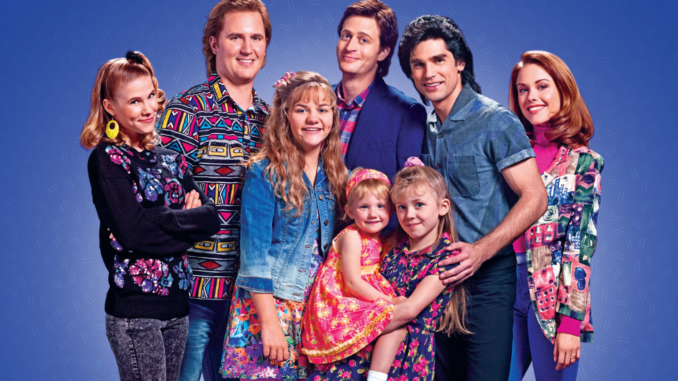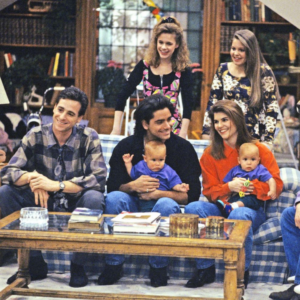
Full House remains one of the most iconic family sitcoms in television history. The show, which ran from 1987 to 1995, captivated audiences with its lovable characters, heartfelt moments, and family-centered storylines. Years later, Netflix revived the family dynamic with Fuller House, a spinoff series that saw the Tanner family return for a new generation. But despite the excitement, many fans argue that Fuller House didn’t quite live up to its predecessor’s success. Why is that? What went wrong with Fuller House?
In this article, we’ll explore why Fuller House didn’t resonate with fans the same way Full House did, and we’ll take a deep dive into the factors that may have contributed to the criticism of the spinoff.
1. Nostalgia vs. New Concepts
One of the most significant challenges that Fuller House faced was living up to the nostalgia of Full House. The original series had a unique blend of humor and heart that made it a beloved staple for audiences. But Fuller House had to find a way to balance that nostalgia with fresh content for a new generation of viewers. This proved to be a difficult task.
Nostalgia Isn’t Always Enough
Many fans of the original Full House tuned in expecting a similar experience. What they got instead was a reimagining that didn’t always capture the magic of the first series. While the characters were the same, the dynamics felt different. The tone of the show, while still light-hearted, seemed to lack the depth that made Full House stand out.
2. Changes in Tone: Was It Too Family-Friendly?
Full House had a way of blending humor with real-life issues, like growing up, dealing with loss, and family struggles. While still a family sitcom, it wasn’t afraid to tackle emotional topics in a way that felt genuine and relatable. On the other hand, Fuller House seemed to focus more on humor, often leaning into more slapstick and over-the-top comedy.
Could Fuller House Have Been More Balanced?
While Fuller House certainly had its funny moments, many critics felt that it lost the heart and sincerity that made Full House a classic. The series often relied on humor that felt forced or too childish, detracting from the emotional depth that viewers had come to expect.
3. The Absence of Key Original Cast Members
One of the most noticeable differences between Full House and Fuller House was the absence of some of the original cast members. While the main characters, like DJ, Stephanie, and Kimmy, returned for the spinoff, the absence of other beloved characters, such as Bob Saget’s Danny Tanner and John Stamos’s Uncle Jesse, was felt by many fans.
The Impact of Missing Faces
While Fuller House brought back some fan favorites, the loss of certain characters left a noticeable void. Bob Saget, who played the widowed father Danny Tanner, was dearly missed. His comedic timing and fatherly wisdom were integral to Full House’s success, and without him, Fuller House struggled to fill that emotional space.
4. Changing Family Dynamics: The Next Generation
Another challenge Fuller House faced was its shift in focus to the next generation of Tanners. The show focused on DJ Tanner-Fuller, now a single mother with her own kids, and Stephanie, who was trying to find her own footing as an adult. The shift in dynamics brought fresh opportunities but also created challenges.
Did the Next Generation Deliver?
While Fuller House explored the next phase in the Tanner family’s life, some fans felt that it didn’t have the same charm as the original. The younger generation, which included DJ’s children, didn’t seem to evoke the same warmth or relatability that the original cast did. It left some viewers longing for the familiar dynamic that Full House had perfected.
5. Humor That Didn’t Land
Humor is central to any sitcom’s success, and Full House certainly had its share of laugh-out-loud moments. However, when Fuller House tried to replicate that magic, not all of its jokes and gags hit the mark. Many viewers felt that the humor was outdated, relying too much on physical comedy or forced catchphrases.
Is Fuller House Humor Too Stale?
One criticism of Fuller House was that it often relied on nostalgic callbacks and reused jokes that didn’t feel fresh. In comparison, Full House had a natural ability to balance humor with real-world situations, making it more relatable to a wide audience. The humor in Fuller House often felt like it was trying too hard, which detracted from the show’s overall charm.

6. Unrealistic Situations and Over-the-Top Plots
Another reason why Fuller House didn’t quite resonate with fans was its over-the-top plots. While Full House had its fair share of quirky storylines, they often felt grounded in reality. Fuller House, however, pushed the envelope with exaggerated situations that sometimes felt unrealistic and disconnected from the family’s day-to-day life.
Did Fuller House Go Too Far?
For instance, many storylines felt more like far-fetched sitcom tropes rather than relatable family moments. The characters were put in situations that seemed overblown, which made it harder for viewers to connect with the storylines on a deeper level. Fans of Full House were used to a more grounded and relatable show.
7. The Pressure of Living Up to a Classic
It’s no secret that Fuller House was always going to face an uphill battle. Full House is a beloved classic, and expectations for its spinoff were incredibly high. Unfortunately, this pressure likely affected how the show was received.
Was Fuller House Doomed from the Start?
No matter how hard Fuller House tried, it could never replicate the magic of the original. Fans had an emotional attachment to the original series, and Fuller House had to constantly live in its shadow. For many viewers, the nostalgia of Full House was simply too strong to overcome.
8. The Role of Social Media and Fan Expectations
In today’s world, fans have more access to the creators and stars of their favorite shows than ever before, thanks to social media. This has created a new dynamic in how shows are received by audiences, with heightened expectations.
Did Social Media Play a Role in Fuller House’s Reception?
With fan expectations at an all-time high, Fuller House was under immense pressure to deliver. And, unfortunately, it didn’t always meet those expectations. Fans often voiced their opinions on social media, which only magnified the show’s perceived shortcomings. The immediate feedback on platforms like Twitter and Instagram meant that Fuller House could never escape its comparison to Full House.
9. The Final Verdict: Was Fuller House a Failure?
While Fuller House may not have lived up to the same level of success as Full House, it still garnered a dedicated fanbase. The nostalgia factor worked for some viewers, especially those who were eager to see the Tanner family back together. However, the show’s reliance on outdated humor, unrealistic situations, and a shift in family dynamics left others feeling disappointed.
Is Fuller House a Worthy Successor?
In the end, Fuller House served as a fun trip down memory lane for Full House fans but couldn’t quite capture the same charm and heartfelt moments that made the original series so beloved. The difference in tone, humor, and family dynamics left many feeling that Full House had set a standard that Fuller House struggled to meet.
Conclusion: The Legacy of Full House Endures
While Fuller House may not have been able to recapture the magic of its predecessor, it still holds a special place in the hearts of many fans. The show was a celebration of the Tanner family and an attempt to bring their story to a new generation. While it may not have been as universally beloved as Full House, it still provided fans with a nostalgic look back at the family they grew to love.
FAQs
- What made Full House so popular?
Full House became popular due to its relatable family dynamics, heartwarming moments, and blend of humor with real-life issues. - Why did Fuller House not live up to Full House?
Fuller House struggled with balancing nostalgia, outdated humor, and a shift in family dynamics, making it hard to capture the same magic that Full House had. - Was Fuller House well-received by fans?
While Fuller House had its share of fans, it didn’t receive the same universal praise as Full House, with many fans criticizing the humor and unrealistic storylines. - Did the absence of key cast members affect Fuller House?
Yes, the absence of key original cast members like Bob Saget and John Stamos was felt, which left a noticeable void in the show. -
What could Fuller House have done differently?
To improve, Fuller House could have balanced its humor with more heartfelt moments, maintained the family dynamic that made Full House special, and avoided relying on outdated sitcom tropes.
